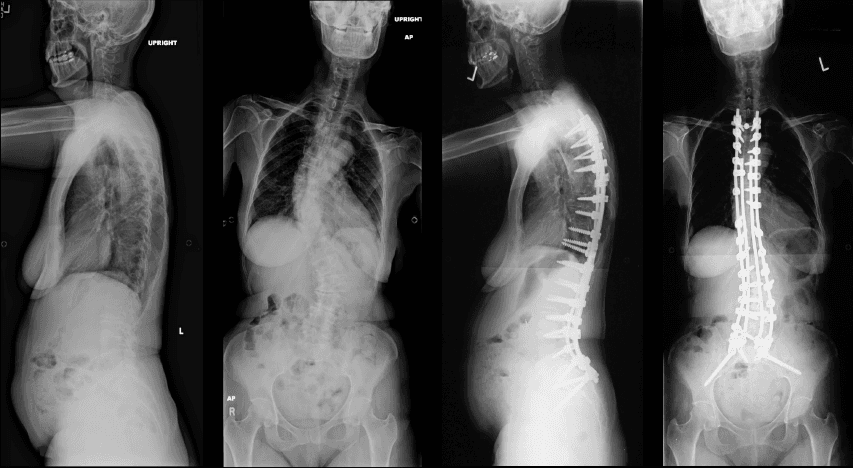Adult spinal deformity (ASD) refers to an abnormal alignment or curvature of the spine that develops after skeletal maturity. It's often a progressive condition caused by age-related degeneration, which can lead to significant pain, physical imbalance, and reduced quality of life. It is characterized by a deviation of greater than 10 degrees from the normal straight alignment.

Adult Spinal Deformity
Overview
Types and Causes
Degenerative Scoliosis: This is the most common type of ASD. It's a sideways curvature of the spine that develops in adulthood due to the gradual breakdown of the intervertebral discs and facet joints. This degeneration causes the vertebrae to slip and rotate, leading to a curve.
Adult Idiopathic Scoliosis: This occurs when a curve that began in childhood (idiopathic scoliosis) progresses or becomes symptomatic in adulthood. The curve, which was previously stable, can worsen due to degenerative changes.
Hyperkyphosis: Referred colloquially as a "hunchback," this is an excessive rounding of the upper back. While a slight curve is natural, extreme kyphosis can be caused by degenerative disc disease, osteoporosis fractures, previous spinal surgery, or congenital malformations.
Flatback Syndrome: A condition where the spine loses its natural curve in the lower back (lordosis), causing the person to compensate by leaning backwards to maintain balance. It can be caused by previous spinal fusion surgeries that didn't preserve the proper spinal alignment.
Symptoms
The symptoms of ASD vary widely depending on the severity and location of the curve. They can include:
- Chronic Back Pain: This is the most common symptom, often located in the lower back.
- Imbalance and Posture Changes: A visible lean to one side, uneven hips or shoulders, and a feeling of being off-balance.
- Nerve compression: In severe cases, the misaligned vertebrae can pinch nerves, leading to pain, numbness, tingling, or weakness in the legs.
- Reduced Mobility: Difficulty standing upright for long periods, walking, and performing daily activities.
Non-Surgical Treatments
- Physical Therapy and Exercise: Strengthening core and back muscles to improve stability and posture is the best way to alleviate pain symptoms initially.
- Lifestyle modifications: Maintaining a healthy weight and avoiding activities that aggravate the pain.
- Medications: Over-the-counter anti-inflammatory drugs such as ibuprofen or naproxen are the preferred first-line medication to manage pain symptoms. Stronger prescription medication may be considered if these fail.
- Injections: Steroid injections or nerve blocks can provide transient relief from nerve-related pain.
- Bracing: Short-term bracing can provide temporary relief and reduce pain, but it won't correct the deformity.
Surgical Treatment
Surgery is typically reserved for severe cases where non-surgical treatments have failed, or when the deformity is causing severe pain, neurological deficits, or a significant impact on quality of life.